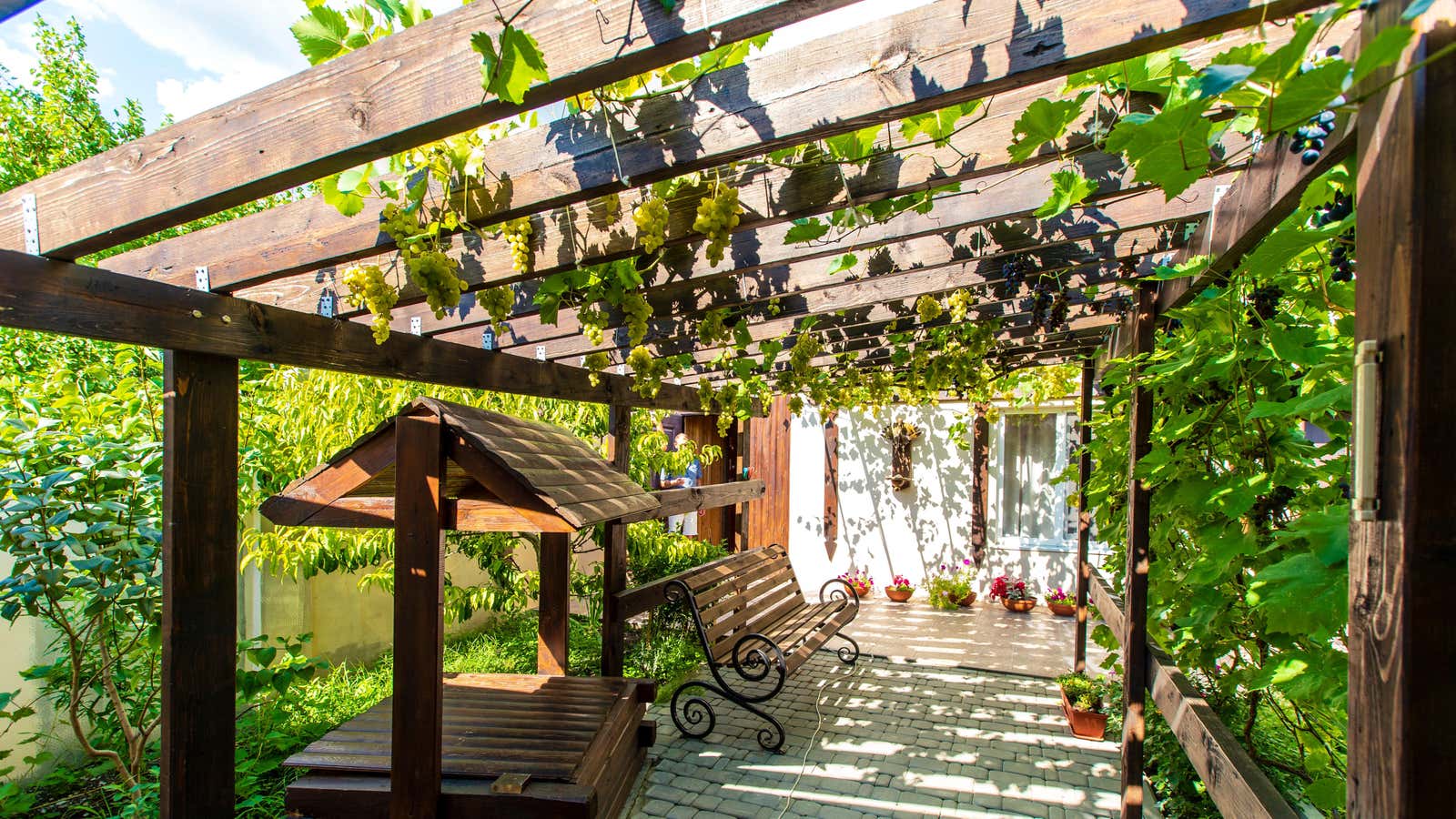How to Grow a Vine on a Gazebo

Open space is a bonus wherever you live, especially if you have outdoor seating. Designs such as a gazebo provide sun shade and add some style to your yard, but they can do more of both if you cover them with creeping vines. These tall, often wooden structures usually have slats on top that create shadows underneath, but often with minimal tint. Planting and encouraging vines to grow to cover them will create a living canopy that will make your space more natural and enjoyable on sunny summer days. If this sounds like your dream, here are some tips to help you find the best plants for you.
What vines to grow on your gazebo
You want the plants that cover your gazebo to be durable, easy to care for, leafy enough to provide adequate shade, and appealing to the eyes. Boston ivy , a fast growing ivy with large maple leaves, is a good choice for shade. This ivy is resistant, growing both in the open sun and in partially shaded areas. They self-raise, forming small discs that stick to the surface as they grow. Another fast growing vine that provides even more shade is the Virginia vine . This hardy plant can grow in almost any soil and climate and requires little maintenance. Strong ivy has green leaves that spread over the gazebos, providing ample shade in the summer, and turn bright red in the fall. If you want more color in your yard, Chinese Jasmine provides full coverage and beautiful flowers. These climbing plants are evergreen , so they live all year round and grow quite quickly. The flowers are white-pink with a pleasant aroma.
Or cover the gazebo with flowers
If you want to add even more beauty to your space, you can plant climbing roses. Their vines are strong and they produce flowers in a wide variety of colors. They really need a little help getting up, so having a trellis or trellis they can cling to will help fill your gazebo. Clematis are curly flowers similar to roses. With a little help, they can grow over your gazebo. The vine produces flowers in a variety of purples, pinks, and whites, as well as enough leaves to protect you from the sun. They are perennials that take multiple growth cycles to flower, but are worth it.
What should not be planted on your gazebo
Plants to be wary of include English ivy and wisteria . Both plants grow quite aggressively and can actually rip apart structures and hinder the growth of other plants. If you do choose these plant options, they will need observation and vigorous pruning. In addition to their strength and rapid growth, wisterias are also poisonous to pets, so pet lovers can opt for a safer alternative.
How to stimulate the growth of climbing plants
To grow an organic canopy, you need to evaluate the type of plant you have chosen, as well as the type of soil and climate . First, take into account the acidity of the soil and the required moisture content for the vine. Plants such as clematis thrive in humid, alkaline environments, so if you prefer this vine, prepare your soil accordingly .
Climbing plants also need some training , including pruning, bending, and tying, to encourage them to cover the desired area. When the soil hardens, plant the vine at the base of the gazebo. When the plant grows tall enough to reach the pillar of the arbor, wrap its antennae around the pillar . For plants that need extra help, you can use soft garden clamps to secure the plant to the post . Using a net can also help direct the shoots in the right direction, and, again, trellises can help direct the growth of plants such as climbing roses. Once the vines reach the top of the gazebo, it becomes difficult to get them to grow horizontally in the right direction, so you need to start tying them to the gazebo for them to attach properly.
Website home tips HomeSteady recommends cut vines in the spring to encourage them to complete more growth and improve their coverage and shape, hoping to prepare for shady summer outdoors.